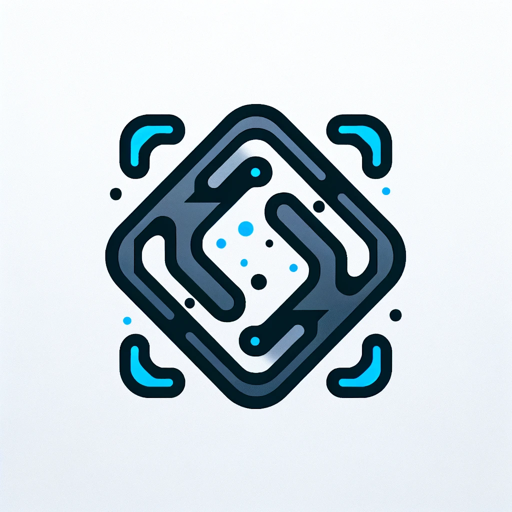Code Assistant-AI-powered coding assistant tool
Your AI-powered solution for coding needs.
Explain this code snippet.
How can I optimize this function?
What's wrong with this code?
Can you help me write a script for...
Related Tools
Load More
Code Assistant
Codes, debugs, refines, with minimal fluff.

Code Helper
Front-end expert GPT, fluent in Chinese.

Code Companion
I'm a Python specialist here to help you code and learn! | Proficient in all coding languages, web design & much more!

Code Companion
I provide full code snippets, optimized for performance and high quality code.
Code Assistant
Detailed code solutions in Java and frontend tech, including test suites.

Code Companion
I offer clear code solutions with brief explanations.
20.0 / 5 (200 votes)
Introduction to Code Assistant
Code Assistant is an advanced AI tool specifically designed to assist developers across a wide range of programming tasks. It leverages natural language processing and deep learning models to analyze, generate, and optimize code, making it a powerful resource for both beginners and experts in the field. Whether you're debugging complex code, exploring new technologies, or automating repetitive tasks, Code Assistant can adapt to your needs. By offering real-time suggestions, code completion, bug fixing, and detailed explanations, it helps enhance productivity, reduces coding errors, and supports learning. For instance, a developer writing Python code to implement a machine learning model can ask Code Assistant to explain a particular error or optimize an algorithm. Meanwhile, a front-end developer might use Code Assistant to generate CSS code or debug JavaScript functionality. The system's ability to understand context and offer personalized, task-oriented support sets it apart from basic code editors or static documentation.

Core Functions of Code Assistant
Code Generation
Example
Generating boilerplate code for a new API in Flask (Python) or Express.js (JavaScript).
Scenario
A developer needs to set up a new REST API quickly. Instead of writing the entire structure manually, the developer can prompt Code Assistant to generate the basic setup, saving time. For example, the system can create route handlers, connect to a database, and handle HTTP requests.
Debugging and Error Resolution
Example
Identifying a TypeError in Python and suggesting a fix.
Scenario
A developer encounters a recurring error in their Python code that crashes their program. By pasting the error message into Code Assistant, the system can analyze the traceback, pinpoint the issue (e.g., a variable type mismatch), and offer a fix, along with an explanation. This process simplifies debugging without needing to search through lengthy documentation or forums.
Code Optimization and Refactoring
Example
Improving the performance of a nested loop in a JavaScript function.
Scenario
A developer has written a working solution for a problem, but it runs inefficiently due to nested loops. Code Assistant can suggest alternative algorithms or optimized approaches to enhance performance, such as replacing a loop with a more efficient built-in function, reducing time complexity from O(n²) to O(n log n).
Target Users of Code Assistant
Professional Developers
Experienced developers, whether they are working as full-stack engineers, front-end or back-end developers, can use Code Assistant to streamline their workflow. These users typically have a strong understanding of coding, but they benefit from using the tool to automate repetitive tasks, quickly resolve bugs, and explore advanced features like performance optimizations or new libraries. Code Assistant allows them to focus on high-level problem-solving rather than manual coding and debugging.
Students and Junior Developers
Students learning to code or junior developers entering the professional world are also ideal users. They benefit from Code Assistant's ability to provide explanations, break down complex concepts, and generate sample code. For this group, Code Assistant serves as both a tutor and a collaborator, helping them learn by doing while offering immediate feedback. This accelerates their learning curve and builds confidence in tackling real-world coding challenges.

How to Use Code Assistant
Visit aichatonline.org for a free trial without login, also no need for ChatGPT Plus.
Start by visiting the provided website, where you can explore the tool for free without any need for signing up or premium accounts.
Define your task clearly.
Before engaging with the tool, ensure you have a clear understanding of the problem or task you need help with. This could range from coding assistance, debugging, or getting explanations for complex programming concepts.
Use simple, direct prompts.
Interact with Code Assistant by providing clear, concise prompts. For instance, ask it to debug specific code, explain a programming concept, or write code snippets for certain use cases.
Refine your prompts based on responses.
If the first answer isn’t what you expected, try refining your prompt. Be more specific with language, add details such as coding language, framework, or version.
Experiment with advanced features.
For optimal use, explore the tool’s capabilities beyond basic code. Code Assistant can help with best practices, performance improvements, refactoring suggestions, and code documentation.
Try other advanced and practical GPTs
Linked In Post Creator
AI-powered LinkedIn posts made easy.

Tiktoers Creative Toolbox
AI-Powered Tools for Video Success

Chibi Genesis Image Generator
Transform Your Genesis NFT into Chibi Art

SciSpace
AI-powered insights for researchers

MTG Concierge
AI-powered MTG game enhancement

LegolizeGPT
AI-powered custom LEGO designs

AI Business Mentor
AI-powered insights for smarter business decisions.

超级Dalle
AI-Powered Image Creation for Everyone

MIT Quantum Photonics & AI
AI-powered quantum and photonics research.

Designed Thinkers
AI-powered innovation for creative solutions.

Paper Summarizer
AI-Powered Summaries for Academic Papers

The Future of Sam: A text adventure
Navigate Sam Altman’s journey with AI-driven decisions.

- Optimization
- Debugging
- Learning
- Code Generation
- Documentation
Code Assistant Q&A
What programming languages does Code Assistant support?
Code Assistant supports a wide range of programming languages, including Python, JavaScript, Java, C++, Ruby, Go, and many others. It also helps with frameworks and libraries like React, Django, Flask, and Node.js.
Can Code Assistant help with debugging?
Yes, Code Assistant excels at debugging. You can paste your code snippet and ask for help identifying and fixing issues. It provides explanations for errors and offers solutions or suggestions for resolving them.
Is it possible to use Code Assistant for performance optimization?
Absolutely! Code Assistant provides tips and best practices for optimizing code performance, suggesting improvements such as algorithm changes, efficient memory usage, and cleaner coding structures.
How customizable are the responses from Code Assistant?
Code Assistant can adjust its responses based on the specificity of your queries. You can ask for detailed explanations, simpler breakdowns, or advanced technical recommendations, depending on your level of understanding and need.
Does Code Assistant offer help beyond just coding?
Yes, it can assist with technical writing, generating documentation, and explaining complex concepts in an understandable way. Additionally, it helps with academic research, project management, and more.